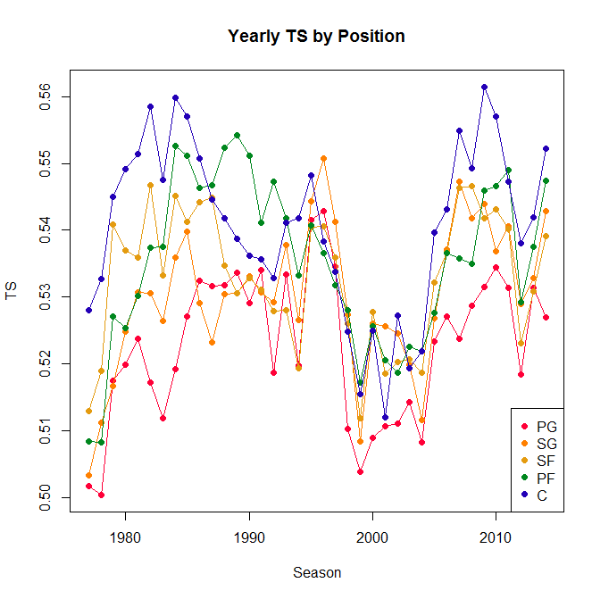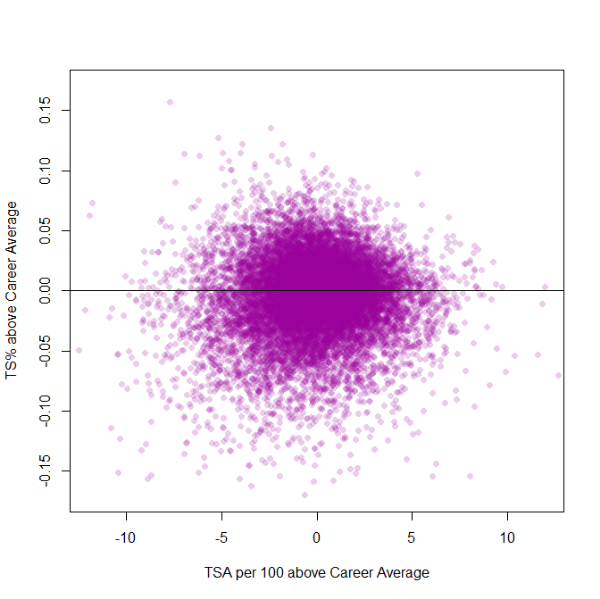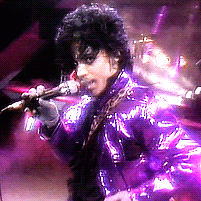Essentially, Score+ is an estimate of the number of additional points per 100 possessions that a player produces relative to league average, given the same number of true shot attempts.
The formula is (Points per 100 possessions) - 2*(True Shot Attempts per 100 possessions)*(League Average TS%)
Players with higher usage (measured by true shot attempts per 100 possessions) will tend to be further away from 0:
So a player with a TS that is 3% above league average who averages 20 TSA per 100 possessions will have a Score+ of 0.03*2*20 = 1.2, meaning that replacing his true shot attempts with league average would reduce a team's scoring by 1.2 points per 100 possessions.
On the other hand, a player with a TS that is only 2.5% above league average but who averages 30 TSA per 100 possessions will have a Score+ of 0.025*2*30 = 1.5, meaning that replacing his true shot attempts with league average would reduce a team's scoring by 1.5 points per 100 possessions.
When looking at the data, I noticed that there were some important positional trends in TS that could be taken into account. Looking at post-merger seasons, it seems that bigs had a more noticeable advantage in TS immediately following the merger, but guards have tended to close the gap a bit:

Hence I also have a position-based version called PosScore+, for which the formula is (Points per 100 possessions) - 2*(True Shot Attempts per 100 possessions)*(League Position Average TS%)
The interpretation is similar to that of Score+, except PosScore+ represents the number of additional points per 100 possessions a player produces relative to league average at his position, given the same number of true shot attempts. This might be useful given the way rule changes have impacted scoring ability and efficiency at different positions over time.
Finally, I've included a team variation called TeamScore+, for which the formula is (Points per 100 possessions) - 2*(True Shot Attempts per 100 possessions)*(Team Average TS%)
Here is a spreadsheet with the top individual Score+, PosScore+, and TeamScore+ seasons since 1951-52 (when player minutes were first recorded). I've also included career leaders in these categories as well as other notable players (Hall of Famers and players with at least 10,000 career points scored).
These are very simple metrics, but I think they could be useful tools for summarizing the volume x efficiency combination.
What's next? The big question is how to account for increased usage. The theory seems to be that players suffer a drop in efficiency with increased usage, and it makes some sense conceptually - would someone like Tony Allen still be able to produce a TS of 0.541 in 2011-12 if we jacked up his true shot attempts to 25 per 100? This brilliant analysis seems to support the notion of a drop in efficiency with increased usage, but it considers overall offensive production (including turnovers), not just scoring efficiency.
I've tried to look at this effect by comparing each player's TS% relative to his career average against usage (again, measured by true shot attempts per 100 relative to career average), including all player seasons with at least 100 true shot attempts from 1951-52 to present. The scatterplot below seems to indicate no significant pattern.

Edit: I changed the x-axis from TSA per 100 to TSA per 100 relative to career average.
Fitting a linear regression model of relative TS% on relative true shot attempts per 100 does not indicate a significant effect of TSA per 100. I've also tried including a quadratic age effect, and the coefficient for relative TSA per 100 is significant but tiny:
Code: Select all
Coefficient Estimate Std. Error t ratio p-value
Intercept -0.22679 0.02565 -22.11 <0.0001
TSA per 100 -0.00030 0.00009 -3.32 0.0009
Age 0.01681 0.00075 22.39 <0.0001
Age^2 -0.00031 0.00001 -22.54 <0.0001
This suggests that for every additional TSA per 100, a player's TS% is expected to decrease by 0.0003. It's a tiny, tiny effect but perhaps I'm thinking about it the wrong way. Once I have a better feel for it I may extend these metrics to try to measure "player scoring value".
For now, however, I thought I'd share these "naive" metrics.














